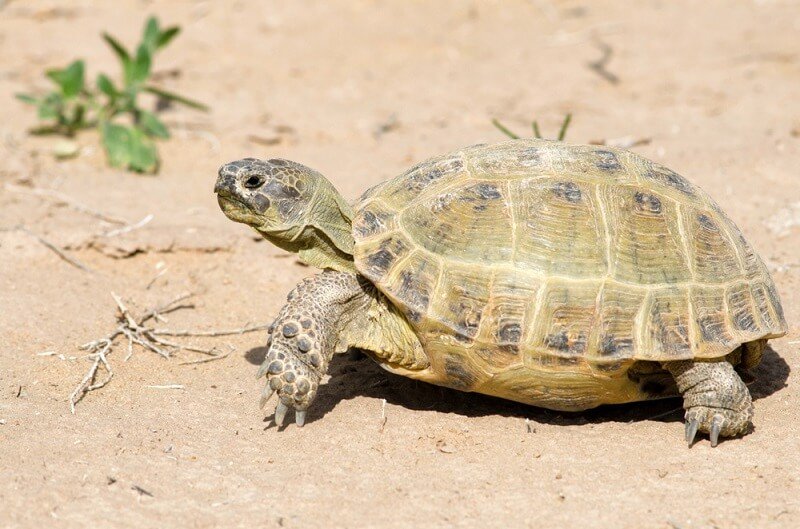
The Russian tortoise, also known as the Horsfield tortoise, is native to regions like Russia and parts of Central Asia. They thrive in dry, rocky habitats and have adapted well to their environment. Sadly, the combination of habitat loss, illegal pet trade, and climate change means these tortoises are facing a greater threat than ever. Understanding their current status and the conservation efforts in place is crucial for their survival and for pet owners like you who may want to help.
What Is the Conservation Status of the Russian Tortoise?
The first thing to grasp is the conservation status of the Russian tortoise. According to the International Union for Conservation of Nature (IUCN), the Russian tortoise is classified as “Vulnerable.” This means they’re not critically endangered yet, but they’re on a slippery slope toward being threatened if current trends continue.
You might picture this like a little tortoise teetering on the edge of a cliff. One wrong move—be it due to habitat destruction or poaching—and they could fall into deeper danger. Their population is declining, and without intervention, they could end up facing serious risks in the wild.
In the wild, these tortoises face various threats. Urban development encroaches on their natural habitats, while agricultural practices lead to habitat degradation. Furthermore, collectors and poachers seek them out for the pet trade. Each of these challenges compounds the problem, making it vital to address them head-on.
Habitat Loss: The Biggest Threat
Let’s talk a bit more about habitat loss, which is arguably the most significant threat to the Russian tortoise. Imagine their natural home—a rocky, dry area with plenty of sun—suddenly being replaced by buildings and roads. Not only does this limit their living space, but it also disrupts their food sources and breeding grounds.
As human populations expand, so do our activities that change the landscape. Farming often requires clearing land, which further pushes these tortoises out of their homes. When they can’t find the right environment, it becomes hard for them to survive, reproduce, and thrive.
And here’s a heartbreaking reality: Russian tortoises are slow to reach maturity. They can take about 10 to 20 years to become adults. This long maturation process means that if their populations hit a snag, like habitat destruction, they’re not likely to bounce back quickly.
The Role of Illegal Pet Trade
Another major issue that impacts the Russian tortoise population is the illegal pet trade. People often think it’s harmless to take a tortoise from its natural habitat, but every tortoise that’s captured disrupts local ecosystems.
When these adorable creatures are collected from the wild, they’re often sold at pet stores or online. But here’s the kicker: many of these tortoises do not survive long after capture due to stress and inadequate care. It’s like taking a fish out of water—eventually, it’s going to struggle.
Regulating this trade is crucial for the Russian tortoise’s survival. Conservationists and wildlife organizations are working hard to raise awareness about the risks of supporting the illegal pet trade. Additionally, they promote the adoption of captive-bred tortoises instead, which helps to alleviate pressure on wild populations.
Climate Change: An Emerging Concern
Climate change is another factor that’s creeping into the conversation about the Russian tortoise. With rising temperatures and changing weather patterns, their habitats are progressively less stable.
Think about it this way: if you lived in a climate that suddenly started getting hotter and drier, it would impact your food sources and living conditions. In the wild, Russian tortoises thrive in specific climate conditions, and any significant shift can make it harder for them to find food or mates.
Moreover, climate change leads to more extreme weather events, like droughts or floods, which can further damage their habitats. This situation is likely to become worse if we don’t act now.
Conservation Efforts in Action
Now, you might be curious about what’s being done to protect the Russian tortoise. Conservation organizations are stepping up with various initiatives designed to raise awareness, protect habitats, and regulate the pet trade.
For instance, groups like the Turtle Survival Alliance are dedicated to educating the public about the need for conservation. They emphasize the importance of preserving natural habitats and discourage the ownership of wild-caught tortoises.
Additionally, habitat restoration projects are underway in many areas. These projects often involve planting native vegetation, creating protected areas, and working with local communities to promote sustainable land use practices.
Every little bit helps. If more people understand the challenges these tortoises face, there’s a chance to slow or even reverse their decline.
How You Can Help Russian Tortoises
So, what can you do to lend a hand? There are several ways you can contribute to the conservation of the Russian tortoise—even if you don’t have a tortoise yourself.
First off, consider adopting rather than buying a tortoise. By choosing to adopt a tortoise from a reputable rescue, you help reduce the demand for wild-caught tortoises. Many rescues are doing a fantastic job of rehabilitating animals that were previously kept in poor conditions.
Secondly, educate yourself and others about the challenges Russian tortoises face. Share articles or talk about conservation efforts in your community. Sometimes, just spreading the word can make a huge difference.
Finally, if you have the means, consider supporting organizations that focus on tortoise conservation. Donations, volunteering, or even participating in awareness campaigns can be impactful ways to make a difference.
In conclusion, the future of the Russian tortoise is precarious, and it really is a shared responsibility to help protect these fascinating creatures. From habitat destruction to climate change and the illegal pet trade, various factors impact their survival. However, with consistent efforts directed toward conservation and awareness, we can work toward a brighter future.
Just like that little tortoise teetering on the edge of the cliff, every action we take can help guide them safely back to solid ground. So let’s do our part—in small ways, we can collectively make a big impact.

